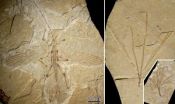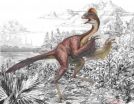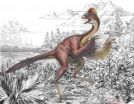(Press-News.org) VIDEO:
A mother and child discuss whether a scenario is dangerous, for a new study by the University of Iowa examining how parents can keep their children safe.
Click here for more information.
As parents, we've all been there: Watching our children teeter on a chair, leap from the sofa, or careen about the playground, fearing the worst. And, we all wonder, how can we teach them to be safer?
Such was the goal of a team of researchers at the University of Iowa, who analyzed in a new study how children take stock of various real-life scenarios, and how mothers can help them assess potential hazards. Their conclusions: Children and mothers regularly don't see eye-to-eye on situational dangers. Because of that, it's critical that mothers explain why a situation is dangerous, beyond simply administering a verbal slap on the wrist.
"One of the biggest worries for any parent is keeping their child safe from injury," explains Jodie Plumert, UI psychology professor and co-author on the study, published in the Journal of Pediatric Psychology. "It's pretty simple when the child is young, because parents directly supervise him (or her). But what about when the child gets older, becomes more independent and goes out on his own? That's when the responsibility for staying safe transfers from the parent to the child. And that means the child has to be able to assess the danger of situations. We think parent-child conversations are the bridge to doing that."
VIDEO:
University of Iowa psychology professor Jodie Plumert discusses her study how parents can help keep their children safe.
Click here for more information.
Of course, children can learn to be more careful by simply trying stuff. But Plumert's team wanted to know whether parents could pre-empt that, and, if so, how. To find out, the researchers showed 63 mothers and their 8- and 10-year-olds photos of other children engaged in various activities. Some – such as a photo of a child swinging a hand-held ax to chop wood or striking a match with a canister of lighter fluid nearby – screamed danger; others – such as riding a skateboard in the driveway or climbing on a countertop – appeared more benign. Separately, the mother and child rated the danger of each scenario on a four-point scale, from very safe to very unsafe. Children also were asked to rate how scared they'd be to perform the activity, also on a four-point scale.
The researchers then brought the mother and child together and asked them to agree on a "safety" rating for each scenario. In about a third of the cases, the mother and child rated the danger of the scenario differently, the researchers found. Despite the initial disagreement, the team also found that mothers were able to bring the child around to their way of thinking 80 percent of the time. In other words, the mother, in most cases, "encouraged their child to actively participate in independently thinking about the safety of the activities and also guided the child to their own way of thinking about the safety of the activities in cases of disagreement," the researchers write.
So, how did they do that? That's where talking became important, Plumert notes. But not just any kind of talk, she adds.
"Saying to your child, 'Don't do that' or 'Stop' or 'Be careful' doesn't really work," Plumert says. "I mean, it's okay to say that, but the next step is to say why not. You shouldn't assume that your child knows why not, even if it seems obvious to you."
Mothers used one tactic especially effectively: They pointed out the dangerous elements in the situation, and explained how those current dangers could cause the child to get hurt. The researchers were initially surprised that mothers focused more on the present features rather than pointing out potential outcomes, but think it's because parents use the present – the danger – to help the child understand the potential outcome – getting injured.
Still, there are some children who are prone to injury, no matter what. These are the risk-takers, and the researchers learned that these children are more likely to view a situation as less dangerous than their peers.
"It's like these kids discount the danger in the situations," says Elizabeth O'Neal, a third-year graduate student in psychology and corresponding author on the paper. "I think, for them, there's always this competition between being cautious and having fun."
These children likely need more parental explanation to counteract their hell-bent-for-leather inclinations, the researchers say.
"In terms of intervention, the mother-child conversation might be especially important for these risk-takers than with the cautious kids," Plumert notes.
O'Neal and Plumert are the paper's sole authors. There was no outside funding for the research.
INFORMATION:
Safety first, children
University of Iowa study examines how parents can teach their children to be safer
2014-03-20
ELSE PRESS RELEASES FROM THIS DATE:
Tiny transistors for extreme environs
2014-03-20
SALT LAKE CITY, March 20, 2014 – University of Utah electrical engineers fabricated the smallest plasma transistors that can withstand high temperatures and ionizing radiation found in a nuclear reactor. Such transistors someday might enable smartphones that take and collect medical X-rays on a battlefield, and devices to measure air quality in real time.
"These plasma-based electronics can be used to control and guide robots to conduct tasks inside the nuclear reactor," says Massood Tabib-Azar, a professor of electrical and computer engineering. "Microplasma transistors ...
Where are we with breast cancer in 2013?
2014-03-20
The global burden of breast cancer remains immense in 2013, with over 1.6 million new cases being diagnosed annually. This burden has been increasing at a rate of 3.1% per year, and while the majority of new cases are diagnosed among women in developed countries, the 450,000 deaths per year from the disease are now equally divided between the developing and developed world, the 9th European Breast Cancer conference (EBCC-9) will hear tomorrow (Friday).
Professor Peter Boyle, Director of the University of Strathclyde Institute of Global Public Health at the International ...
Choice of GP practice pilot most popular with young commuters and patients moving home
2014-03-20
A pilot scheme allowing patients to visit GPs outside the area they live in was most popular among younger commuters and people who had moved house but did not want to change their GP, according to a new report by the London School of Hygiene & Tropical Medicine.
The Department of Health's Choice of GP pilot scheme found that while demand overall was modest, participants were generally positive about the scheme and there was little sign of major increased cost to primary care trusts (PCTs) for providing the service. Patients will be able to register with volunteer practices ...
Future heat waves pose threat to global food supply
2014-03-20
Heat waves could significantly reduce crop yields and threaten global food supply if climate change is not tackled and reversed.
This is according to a new study led by researchers at the University of East Anglia and published today, 20 March, in IOP Publishing's journal Environmental Research Letters, which has, for the first time, estimated the global effects of extreme temperatures and elevated levels of carbon dioxide (CO2) on the production of maize, wheat and soybean.
Earlier studies have found that climate change is projected to reduce maize yields globally ...
Data on antibiotic use in non-EU countries should stimulate development of action plans
2014-03-20
A new study, published in The Lancet Infectious Diseases journal, provides the first ever reliable data on antibiotic use in non-European Union (EU) southern and eastern European countries and newly independent states.
The research, which was led by Dr Herman Goossens, of the Vaccine and Infectious Disease Institute (VAXINFECTIO) at the University of Antwerp, Belgium, is a critical first step in identifying targets for improvements in the way antibiotics are used in these countries. The authors hope that the findings will aid the development of national action plans ...
Fossils of earliest stick insect to mimic plants discovered
2014-03-19
An ancient stick insect species may have mimicked plant leaves for defense, according to a paper published in the open-access journal PLOS ONE on March 19, 2014 by Maomin Wang, from Capital Normal University, China and colleagues.
Many insects have developed defense mechanisms, including the ability to mimic the surrounding environment. Stick and leaf insects mimic plants from their environment, but scientists know little about the original of this interaction due to little or no previous stick insect fossil records showing this adaptation. The scientists discovered three ...
Large feathered dinosaur species discovered in North America
2014-03-19
Fossils found in western North America reveal a new species of large-bodied, feathered oviraptorosaurian theropod dinosaur from the latest Cretaceous Period, according to a paper published in the open-access journal PLOS ONE on March 19, 2014 by Matthew Lamanna from Carnegie Museum of Natural History in Pennsylvania and colleagues.
Known for their beaks, long necks, and relatively short tails, the bird-like oviraptorosaurian group contains dinosaurs with body sizes ranging from a few kilograms to more than one metric ton. The scientists described three well-preserved partial ...
Fossilized bighorn sheep poop reveals early Holocene population
2014-03-19
Genetic analysis of ancient poop found off the coast of Mexico suggests bighorn sheep may be native to the island, according to a paper published in the open-access journal PLOS ONE on March 19, 2014 by Benjamin Wilder from University of California Riverside and colleagues.
Bighorn sheep were not thought to inhabit Tiburón Island, the largest island in the Gulf of California and Mexico, prior to their introduction in 1975. Scientists discovered fossilized dung in the mountains of Tiburón Island that challenges that assumption. Scientists compared the pellet-shaped poop ...
Bighorn sheep went extinct on desert island in Gulf of California, study finds
2014-03-19
RIVERSIDE, Calif. — Using ancient DNA analysis and other techniques, a research team led by conservation biologists at the University of California, Riverside has determined that bighorn sheep, so named for their massive spiral horns, became extinct on Tiburón Island, a large and mostly uninhabited island just off Sonora, Mexico, in the Gulf of California, sometime in the last millennium — specifically between the 6th and 19th centuries.
The result, published March 19 in PLOS ONE, is a surprise because conventional wisdom among wildlife biologists and the indigenous Seri ...
A 'chicken from hell' dinosaur
2014-03-19
SALT LAKE CITY, March 19, 2014 – Scientists from Carnegie and Smithsonian museums and the University of Utah today unveiled the discovery, naming and description of a sharp-clawed, 500-pound, bird-like dinosaur that roamed the Dakotas with T. rex 66 million years ago and looked like an 11 ½-foot-long "chicken from hell."
"It was a giant raptor, but with a chicken-like head and presumably feathers. The animal stood about 10 feet tall, so it would be scary as well as absurd to encounter," says University of Utah biology postdoctoral fellow Emma Schachner, a co-author of ...
LAST 30 PRESS RELEASES:
Sports injuries sustained during your period might be more severe
World's first successful 2 Tbit/s free-space optical communication using small optical terminals mountable on satellites and HAPS
Can intimate relationships affect your heart? New study says ‘yes’
Scalable and healable gradient textiles for multi‑scenario radiative cooling via bicomponent blow spinning
Research shows informed traders never let a good climate crisis go to waste
Intelligent XGBoost framework enhances asphalt pavement skid resistance assessment
Dual-function biomaterials for postoperative osteosarcoma: Tumor suppression and bone regeneration
New framework reveals where transport emissions concentrate in Singapore
NTP-enhanced lattice oxygen activation in Ce-Co catalysts for low-temperature soot combustion
Synergistic interface engineering in Cu-Zn-Ce catalysts for efficient CO2 hydrogenation to methanol
COVID-19 leaves a lasting mark on the human brain
Scientists use ultrasound to soften and treat cancer tumors without damaging healthy tissue
Community swimming program for Black youth boosts skills, sense of belonging, study finds
Specific depressive symptoms in midlife linked to increased dementia risk
An ‘illuminating’ design sheds light on cholesterol
Who is more likely to get long COVID?
Study showcases resilience and rapid growth of “living rocks”
Naval Research Lab diver earns Office of Naval Research 2025 Sailor of the Year
New Mayo-led study establishes practical definition for rapidly progressive dementia
Fossil fuel industry’s “climate false solutions” reinforce its power and aggravate environmental injustice
Researchers reveal bias in a widely used measure of algorithm performance
Alcohol causes cancer. A study from IOCB Prague confirms damage to DNA and shows how cells defend against it
Hidden viruses in wastewater treatment may shape public health risks, study finds
Unlock the power of nature: how biomass can transform climate mitigation
Biochar reshapes hidden soil microbes that capture carbon dioxide in farmland
Reducing saturated fat intake shows mortality benefit, but only in high-risk individuals
Manta rays create mobile ecosystems, study finds
Study: Mixed results in using lipoic acid to treat progressive multiple sclerosis
Norbert Holtkamp appointed director of Fermi National Accelerator Laboratory
New agentic AI platform accelerates advanced optics design
[Press-News.org] Safety first, childrenUniversity of Iowa study examines how parents can teach their children to be safer








